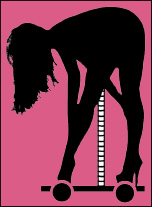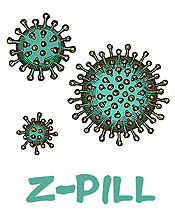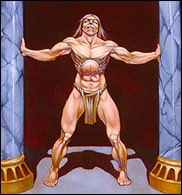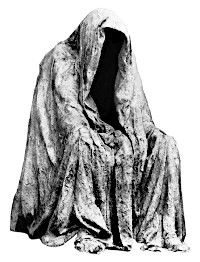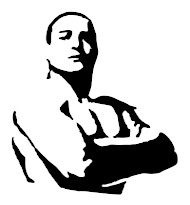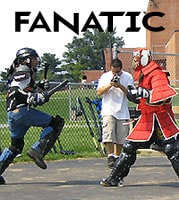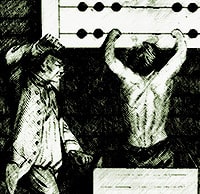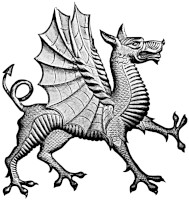31. He who intends to enter the pentathlon ought to be heavy rather than light, and rather light than heavy; and besides, lean, well-built, tall, sufficiently yet not excessively muscular. He should also have long rather than well-proportioned legs, and lithe, flexible hips, because of the back-swing in javelin-throwing and hurling the discus, as well as for jumping; for he will jump with less pain and break nothing in his body, if he gains a firm footing, letting the hips down slowly. And he must also have long hands and slender fingers, for he will throw much better, if, as a result of the length of finger, the discus be hurled with a sharply crooked hand; and he will hurl the javelin with less effort if the fingers do not have to touch the thong with the tips, because they are too short.
[The javelin used has the thong in the ancient Thracian style of the peltast. Its use in the cast imparts a spiral and additional leverage. This man, the pentathlete, was regarded as the best all around citizen by Aristotle and generally took up the heroic roll of leader for small town military action in the time when Rome was becoming involved in Greek politics.]
32. He who wishes to excel in the distance race, ought to be strong in neck and shoulders, like a pentathlete, but should have light, slender legs, like the stade-runners; for these set their legs into quick running motion by means of their hands as though they were winged; the distance runners do this at the end, but, at other times, they go almost as in a walk, holding the hands forward in a pushing position, for which reason they need stronger shoulders.
33. Between contestants in the armed race, stade- and double stade-race, no one makes a distinction any more, since the time when Leonidas of Rhodes was victorious in these three events in four successive Olympiads;
[This might have been in the late 400s and early 300s B.C. when Rhodian athletes were dominant. This is the first mention I have found of this man in ancient sources. This was the kind of athlete that best matched the poetic description of Achilles.]
nevertheless, a distinction is to be made between those who intend to compete in these contests separately, and those who compete in all at the same time. The armed runner ought to be distinguished by a slender waist, well-developed shoulders and supple knees, in order that the shield may be easily carried and supported by these parts.
[The aspis shield was designed to rest on the shoulder.]
Of the stade-runners, who represent the lightest sort of contest, the well-proportioned are, indeed, quite good, but better than these are those who are not too tall but still somewhat slenderer than the well-proportioned; for excessive height lacks firmness, just as do plants which shoot up tall. They should be powerfully built, for the beginning of a good race is good posture. Their physical proportions should be as follows: the legs should be in proportion to the shoulders; the chest somewhat below the mean and have sound organs; the knees should be supple, the shin straight, and the hands above the average; they should also have a moderate muscular system, for excessive muscles are leaden weights for speed.
For contestants in the double stade-race, let those be designated who are stronger than the stade-runner, but lighter than those who run in armor. The participants in all three kinds of races, however, ought to be selected from the best, and should unite in themselves the merits which these separately exhibit. Let no one consider this impossible, for such runners have appeared even in our own day.
34. The boxer should have long hands and a strong forearm and not...1 upper arm,
[The forearm was used to block against a gauntlet that was a weapon, rather than padded. This is the same in bare-knuckle boxing, that the lower arm act as a shield. A large upper arm was not valued because without clinching allowed, the upper cut would be of limited utility.]
powerful shoulders, and a long neck.
[Powerful shoulders are obvious. The long neck, often a disadvantage in some forms of combat, would help with slipping straight punches and pulling the chin away from hook punches.]
As for the wrists, the thick are heavier for striking; the less thick, mobile and adroit in thrusting.
[Without weight classes, it must be understood that style will depend on relative attributes, with the thucker bones man shielding with forearms and counter punching hard as he comes in, as described in Virgil, with the heavy man relying like Glaukos, on the hammer fist, which, like the back fist and spinning back fist, may strike with the pinkie side of the wrist. His lighter-wristed opponent must lead and feint and move with straight punches. This was the type of match described between Polyduces and Amycus, and Apollo and Bupul, with the lighter boned man thrusting punches at a heavy boned man.]
Well-built hips should also support him, for the forward thrust of the hands throws the body off balance, if it does not rest on firm hips.
[This is a function of balance and hip strength is a key aspect of balance.]
Thick-calved persons, according to my observation, are not fitted for any sort of contest, least of all, however, for boxing; for they are especially sluggish in kicking the shin of an opponent, and, on the other hand, are easily taken unawares by kicking.
[Obviously, by this time in late Antiquity, the prohibition against kicking has been adjusted to permit leg kicks only. This makes sense in point of fact of the dangerous hand gear and the primacy of pankration over boxing. It is still an axiom today, that the boxer with thick calves, especially that have short tendons, suffers in outer range footwork and is most suited for getting in close and hooking with power punches with elbows close to the hips. The dangerous nature of the hand gear of the age, would make this especially risky and the shin stomp, mostly sued today in Wing Chun and Jeet Kune Do in association with weapon knife use, would be an obvious method for checking the forward progress of such a bruise, whose brows could be diced up with the hard glove. In stick fighting this is called a foot check and was a common method in french savate and cane work. The ancients did not permit this in boxing. Due to the traditional weight of these sacred contests, I am suggesting that kicking was redefined to exclude foot checking. There might also be a problem with the Greek-to-German-to English translation here.]
His shins ought, therefore, to be straight and proportionate, while the thighs should stand out far apart from each other; for the figure of the boxer is adapted for attack if the thighs are not close together.
[He is arguing against a thick-thighed man such as Odysseus, more adapted to sniping with quick blows, as described by Quintus of Smyrna in the 400s A.D. “the quick play of cunning hands.” the drift away from the powerful boxer to the dexterous boxer caused by the hand gear, obviously made the boxer less suited for pankration.]
It is best if the belly be drawn in; for such people are light and have good respiration. For all that, however, the belly [if it is prominent] gives the boxer a certain advantage, for such a belly hinders blows at the face, in that it checks the force of the blow.
[The belly helps against body blows so long if not distended. The idea that a fatter fighter gets hit less hard in the face than the lighter fighter, is flat wrong, it being the opposite, with the excess weight anchoring the head more and imparting more resistance tot he punch and stressing the neck. This man did not box, but misread the fact that lighter fighters hitting larger fighters in this system, as with bare knuckle boxing, were loath to commit all of their force against a foe who could bring down a hammer fist and break their collar bone.]
35. Let us go on to the future wrestlers! The normal wrestler ought to be slender rather than well proportioned, but built like the well-proportioned; he should have neither a long neck nor one sunken into the shoulders, for, though, to be sure, that is useful, it, nevertheless, looks deformed rather than athletic, at least if one has a comprehension of such things; how much more pleasing and god-like are those statues of Herakles which are nobly-formed, not sunken.
[Here, this homo, who wrote Love Letters to a Boy, is more concerned about how handsome the wrestler is, an activity he supercharges with erotica, despite the fact that a ‘sunken’ or short necked and large shouldered build presents benefits to the wrestler. This book is written to assist the elite, non athletic spectator in his enjoyment of a viewing agons as a spectator.]
Rather, the nape of the neck should be erect, as in a beautiful, proud horse, the base of the neck reaching down to the collar bone. Well-joined upper shoulders and elevated shoulder tips give to the future wrestler a stately appearance, noble figure, power, and better adaptation to wrestling; for such shoulders are a good protection, even if the neck be turned or bent down in wrestling, since they give the head the support of the arms.
A well-formed arm is an advantage in the wrestling match. However, by well-formed I mean an arm of the following sort: thick veins begin in the nape of the neck and throat, one on each side, and, running over the shoulders, and appearing on the upper and lower arm, they go down to the hands. A person in whom they are excessive and visible on the surface, gains no power through them, and such veins are also unpleasing to look at, like varicose veins:
[His obsession with veins being visible showing weakness is probably based on the more durable nature of men with a slight layer of fat to pad him against blunt trauma, misunderstood by his homo-erotic eye.]
but for one in whom they are deeply imbedded and but little distended, they reveal a slight and peculiar pneuma of the hands, and keep the arms of older persons young, while, in the younger, they give an appearance of readiness, promising much in wrestling.
The breast is best if prominent and arched, for the organs rest therein as in a firm and well-constructed room, noble, powerful, healthy, uniting courage and calculation. The breast, however, is also beautiful, if it is moderately arched, lean all round and marked with lines; for it is then strong and adroit, but, to be sure, less fit for wrestling, though better adapted than some others. People with flat, sunken breasts, according to my opinion, are neither to be stripped nor trained; for they betray themselves by indigestion, unsound organs, and short breath.
[Polikoff, in Ancient Combat Sports, notes that graphic prize fighting art in the classic period was distorted by the homo-erotic focus on the handsome chest.]
The belly, in its lower parts, ought to recede, for a pendulous belly is a useless burden for the wrestler. The groins, however, upon which it rests, should not be undeveloped, but even somewhat well-nourished; for such groins are adapted to squeezing everything that presents itself in wrestling, and, when squeezed themselves, will rather cause pain than suffer it.
[The chief interest in the wrestler is obvious erotic and explains that in the author’s life time that a wrestler and bathing companion of an emperor was employed to strangle him in his bath.]
The back is beautiful, if it is straight, but one slightly bent is better adapted to wrestling, because nearer to the wrestling-posture, which is curved and bowed forward. It ought not to be characterized by a hollow back-groin, for this is the result of lack of marrow, and the vertebrae are then easily bent and are occasionally forcibly dislocated, inward, by holds in wrestling. Still this, to be sure, may be more fanciful than true. The hips, set like an axis between the upper and lower limbs, must be flexible, mobile, and firm. This, however, is effected by their size and, by Zeus, a little more than average amount of flesh. The parts under the hips ought not be too emaciated, nor yet too fat—for the former betrays weakness; the latter, unfitness for training—but, for the future wrestler they should be strong and moderately prominent.
[This man is not portraying the massively strong wrestlers of classical antiquity such as Milo, who were front line combat soldiers, but an athlete that was more of an interactive posing body builder than what we think of as a wrestler. This was upright naked judo without ground work. Our idea of wrestling involves more the panration grappling aspect.]
A flexible side, which imparts mobility to the breast, is fit for attack and defense in wrestling; for such people, if they lie under an opponent, are difficult to conquer, and on the other hand are no light burden for him who lies under them. The rump is weak if it is narrow, when too broad, inert; if well-formed, adapted to all purposes. A well-jointed upper thigh which turns outward combines beauty with strength and supports the whole easily, and, to be sure, all the more easily if the shin which supports it bends out nowhere and the thigh resting upon it forms a straight knee. Ankle bones, which are not straight but slanting and pushed inward, injure the balance of the body as sloping bases do that of firm pillars. Such is the nature of the wrestler, and he will be able, with these characteristics, to execute the pancration on the ground [Greek] but the standing hand-contest [Greek] less well.2
[The homo-erotic authority on prize-fighting from Late Antiquity, continues to explore combat sports as a spectator lesson in human domestication for academics, homo-sexual submissives, and women.]


